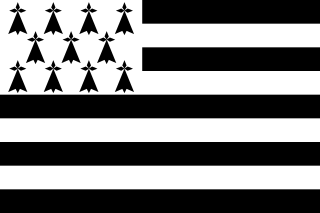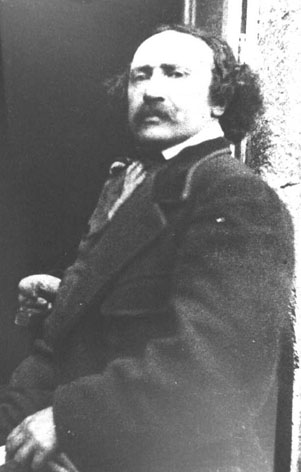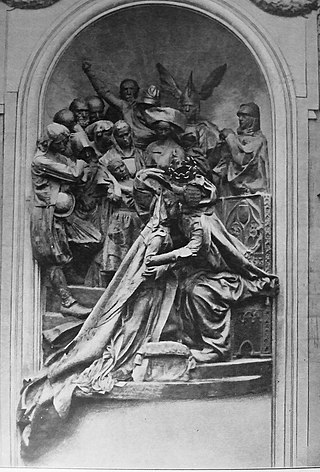Related Research Articles

Breton nationalism is the nationalism of the historical province of Brittany, France. Brittany is considered to be one of the six Celtic nations.

Breiz Atao, was a Breton nationalist journal in the mid-twentieth century. It was written in French, and has always been considered as a French nationalist journal by the non-francized Bretons. The term is also used for the broader movement associated with the journal's political position.
Raffig Tullou, alias Neven Lewarc’h was a Breton sculptor and set designer. His works included modern Celto-Breton furnishing art, wood carvings, stone carvings, and restoration of historical buildings.

Olier Mordrel is the Breton language version of Olivier Mordrelle, a Breton nationalist and wartime collaborator with the Third Reich who founded the separatist Breton National Party. Before the war, he worked as an architect. His architectural work was influenced by Art Deco and the International style of Le Corbusier. He was also an essayist, short story writer, and translator. Mordrel wrote some of his works under the pen names Jean de La Bénelais, J. La B, Er Gédour, A. Calvez, Otto Mohr, Brython, and Olivier Launay.

Long before World War II, the various Breton nationalist organizations were often anti-French and anti-colonialist, opposed to the Central Government's policy of linguistic imperialism, and critical to varying degrees of post-French Revolution-style Republicanism. Some Breton nationalists were openly pro-fascist. The extent to which this led Breton nationalists into collaboration with the Axis Powers and their motivations, remains a matter of often bitter historical controversy and debate.

François-Marie Luzel, often known by his Breton name Fañch an Uhel, was a French folklorist and Breton-language poet.

The Breton National Party was a nationalist party in Brittany that existed from 1931 to 1944. The party was disbanded after the liberation of France in World War II, because of ties to the Third Reich.

The Breton Regionalist Union was a Breton cultural and political organisation created August 16, 1898. It was a broadly conservative grouping dedicated to preserving Breton cultural identity and regional independence. It expressed the ideology of mainly middle-class and aristocratic groups to secure continuity in local administration and Breton culture.

Feiz ha Breiz is the principal weekly journal in the Breton language. It originally appeared from 1865 to 1884, then was revived from 1899 to 1944, and then again from 1945 onwards.

François Debeauvais was a Breton nationalist and wartime collaborator with Nazi Germany. His name is also spelled in many "Breton" variants: François Debauvais, Fransez Debeauvais, Fransez Debauvais, Fañch Debeauvais, Fañch Debauvais, Fañch deb.

Morvan Marchal was an architect and a prominent member of the Breton national movement. He is best known for having designed the national flag of Brittany.
The Bezen Perrot, officially the Breton SS Armed Formation was a small collaborationist unit established by Breton nationalists in German-occupied France during World War II. It was made up of personnel from Lu Brezhon, a Breton nationalist militia, under the leadership of Célestin Lainé.
René-Yves Creston, born René Pierre Joseph Creston, was a Breton artist, designer and ethnographer who founded the Breton nationalist art movement Seiz Breur. During World War II he was active in the French Resistance.
The Breton Federalist League was a short-lived Breton political party in the 1930s. A new organization with the same name was created in the 21st century.
Maurice Duhamel was the pen-name of Maurice Bourgeaux, a Breton musician, writer and activist who was a leading figure in Breton nationalism and federalist politics in the years before World War II.
James Bouillé was a French architect from Brittany.
Breiz da Zont, was a Breton nationalist periodical active during the 1930s. It was affiliated to an extremist offshoot of the Breton Autonomist Party.
Camille Le Mercier d'Erm was a French poet, historian and Breton nationalist. He later adopted the neo-Bardic name Kammermor. He is also known as Kamil Ar Merser 'Erm, the Breton language form of his name. His work as a poet and historian is marked by nationalist claims and calls to rebellion against the French state on the model of Irish nationalism.

L'Heure Bretonne was a Breton nationalist weekly newspaper which was published from June 1940 to June 1944. It was the organ of the Breton National Party and was strongly associated with collaborationist politics during World War II.

The bomb attack of 7 August 1932 in Rennes was aimed at a work by the sculptor Jean Boucher, symbolizing the union of Brittany and France, and placed in a niche in Rennes City Hall. Since its inauguration in 1911, the statue, representing Anne of Brittany, had been considered degrading by the Breton movement, due to its kneeling position before the King of France.